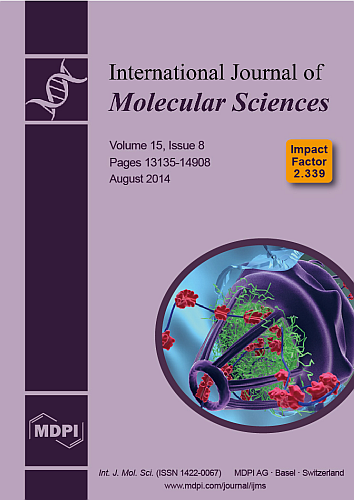Beclin 1 participates in development, autophagy, differentiation, anti- apoptosis, neurodegeneration, tumorigenesis and cancer progression. The roles of
Beclin 1 in colorectal carcinogenesis and its subsequent progression are still unclear. Here, the mRNA and protein expression of Beclin 1 were determined in colorectal carcinoma
[...] Read more.
Beclin 1 participates in development, autophagy, differentiation, anti- apoptosis, neurodegeneration, tumorigenesis and cancer progression. The roles of
Beclin 1 in colorectal carcinogenesis and its subsequent progression are still unclear. Here, the mRNA and protein expression of Beclin 1 were determined in colorectal carcinoma and matched mucosa by Reverse transcriptase-polymerase chain reaction and Western blot. Immunohistochemistry and
in situ hybridization (ISH) were performed on tissue microarryer with colorectal carcinoma, adenoma and mucosa. The expression of
Beclin 1 mRNA and protein was found to be higher in colorectal carcinoma than matched mucosa by real-time PCR and Western blot (
p < 0.05). According to the ISH data,
Beclin 1 expression was lower in colorectal non-neoplastic mucosa (NNM) than adenoma and carcinoma (
p < 0.05). Immunohistochemically, primary carcinoma showed stronger Beclin 1 expression than NNM and metastatic carcinoma in the liver (
p < 0.05). Beclin 1 protein expression was negatively related to liver and distant metastasis (
p < 0.05), but not correlated with age, sex, depth of invasion, lymphatic or venous invasion, lymph node metastasis, tumor-node-metastasis (TNM) staging, differentiation or serum carcinoembryonic antigen (CEA) concentration (
p > 0.05). Survival analysis indicated that Beclin 1 expression was not linked to favorable prognosis of the patients with colorectal carcinoma (
p > 0.05). Cox’s model indicated that depth of invasion and distant metastasis were independent prognostic factors for colorectal carcinomas (
p < 0.05). It was suggested that Beclin 1 expression is closely linked to colorectal carcinogenesis and distant metastasis of colorectal carcinoma.
Full article






